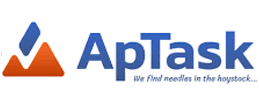Enhancing Office 365 Security With CIS Benchmarks

Center for Internet Security (CIS) Benchmarks are a series
of guidelines developed to enhance an organisation's
security posture across various technology platforms,
including those provided by Microsoft Office 365 (O365).
These benchmarks, developed through a community-driven
consensus process, cover a wide range of vendor product
families and serve as a foundation for implementing a
defense-in-depth strategy, ensuring services and products
are secure by default.
Broad Categories and Alignment with O365
The CIS Benchmarks cover seven broad categories, each of
which can be aligned with Office 365 security practices:
Operating Systems: For O365, ensure that all devices
accessing the service are up-to-date with the latest
security patches and configurations as recommended by CIS
for the operating systems.
Cloud Infrastructure and Services: Directly
applicable to O365, follow best practices for securing your
cloud environment, including the use of secure access
controls, encryption, and monitoring activities.
Server Software: While O365 is a cloud service,
integration with on-premises servers for hybrid
configurations must adhere to CIS recommendations for
securing server-based applications.
Desktop Software: Secure all desktop applications
accessing O365 by applying CIS benchmarks, ensuring software
is regularly updated and follows best security practices.
Mobile Devices: Implement guidelines for securing
mobile devices and their operating systems to protect access
to O365 applications on-the-go.
Network Software: Secure network infrastructure that
supports O365 access, including routers and switches,
following CIS best practices.
Multi-Function Print Devices:Ensure that devices
connected to O365 for printing or scanning are secured as
per CIS recommendations to prevent unauthorized access.
Levels of CIS Benchmarks and O365
CIS Benchmarks are divided into two levels, each suitable
for different security needs:
Level 1 Profile: Offers basic security
recommendations. For O365, this could include implementing
default security configurations provided by Microsoft,
ensuring broad compatibility and minimal impact on
usability.
Level 2 Profile:Provides more advanced security
measures suitable for environments handling sensitive data.
In O365, this may involve stricter access controls, advanced
threat protection features, and comprehensive data loss
prevention policies.
Benefits of Implementing CIS Benchmarks with O365
Adopting CIS Benchmarks for O365 can significantly enhance
security, offering benefits such as:
Reduced Risk of Data Breaches: Strengthening O365
security configurations as per CIS recommendations can lower
the likelihood of breaches and cyber-attacks.
Enhanced Security Posture: Aligning O365 practices
with CIS benchmarks strengthens defense mechanisms against
cyber threats.
Increased Customer Trust: Demonstrating a commitment
to security can enhance customer satisfaction and trust.
Compliance with Regulations: Following CIS Benchmarks
helps ensure adherence to legal and security standards,
important for regulatory compliance.
CIS Controls vs. CIS Benchmarks for O365
While CIS Controls provide generic security guidelines, CIS Benchmarks offer specific recommendations, including settings and configurations for O365, ensuring detailed guidance for securing your cloud environment in alignment with broader security controls.
CIS Benchmark Gap Analysis and Remediation for O365
Our CIS Benchmark Gap Analysis Service will identify how your current O365 setup compares to CIS Benchmarks, highlighting gaps and providing actionable recommendations for improvement. Our Remediation Service assists in implementing these changes, ensuring your O365 environment aligns with CIS Benchmarks for optimal security.























